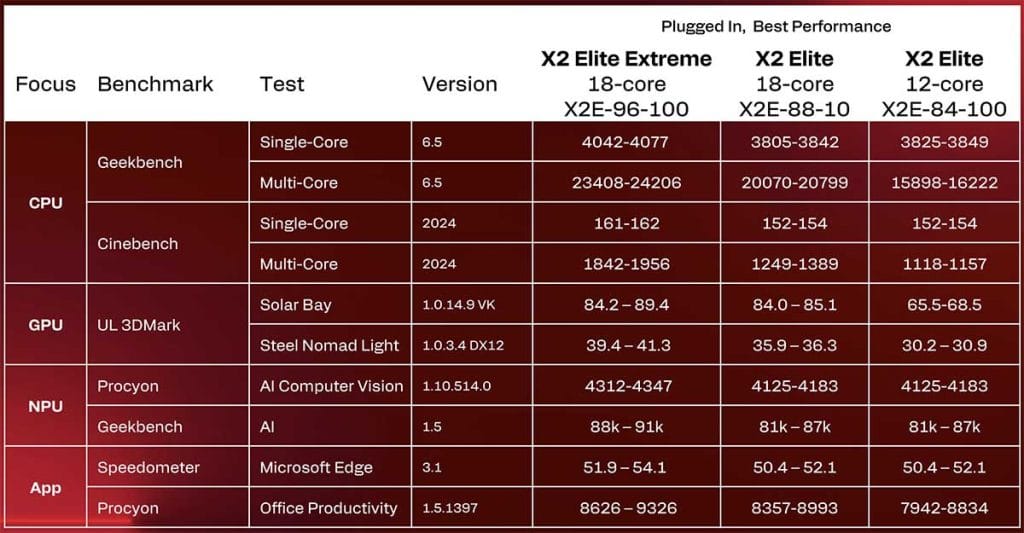(Disclosure: Thanks to Qualcomm for hosting Revü at the Snapdragon X Series Architecture Deep Dive 2025 in San Diego, California. Travel and accommodations were covered, but all opinions are our own.)
Confession time: For years, we thought the Windows PC market was boring. It was a comfortable, stagnant duopoly.
Consumers typically bought an Intel machine — or perhaps an AMD one if they were feeling a bit adventurous — and year after year, they saw modest gains: slightly better battery life, a bit higher benchmark scores, faster spreadsheet processing, and maybe, if they were lucky, improved frame rates in games. There was no existential threat driving innovation. The category felt solved.
Then came 2024.
We were in Singapore earlier this year for Qualcomm’s regional launch of the first-generation Snapdragon X Elite, and the energy in the room felt different. It marked a real shift and was not just another processor refresh. The American chipmaker had set up immersive “Creative” and “Beach” zones to show that Windows on ARM had finally grown up — apps launched instantly, battery life rivaled Apple’s MacBooks, and the long-standing duopoly suddenly seemed less inevitable. It genuinely felt like the beginning of something new.
We remember standing there, watching a demo of the Moises app running AI tasks significantly faster than a standard CPU, and djay Pro slicing audio tracks in real time, isolating vocals from instruments on the fly using just the neural processing unit or NPU. It was fast, it was local, and it didn’t rely on the internet-dependent power of cloud computing. More importantly, it signaled the arrival of a new way of thinking about PCs: less cloud-dependent, more self-sufficient.
Goodbye, duopoly?
Now, sitting here in San Diego, California, for the Snapdragon X Series Architecture Deep Dive 2025, that spark has become an inferno. Qualcomm has unveiled the Snapdragon X2 Elite platform, featuring the Snapdragon X2 Elite Extreme (X2E-96-100) and the Snapdragon X2 Elite (with 18- and 12-core variants codenamed X2E-88-10 and X2E-84-100, respectively), all fabbed on TSMC’s 3nm process. If the claims we heard and saw during the keynotes and demos are anything to go by, the era of stagnation may finally be over.
It’s clear that Qualcomm is no longer content with being just a participant — a minor player — in the PC market. It’s picking a fight with Intel, AMD, and Apple, and early benchmarks suggest it may have even leapfrogged the industry leaders in various performance and efficiency tests. And frankly, that’s exactly what we need right now.
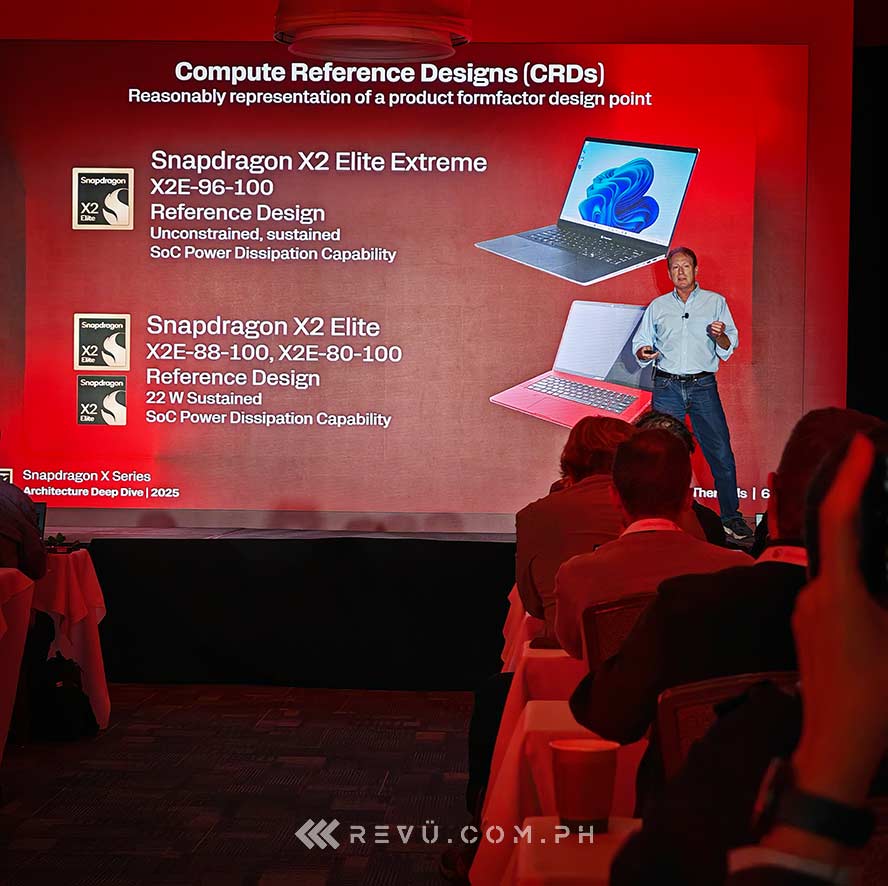
An ‘Extreme’ makeover
Taking center stage this year is the Snapdragon X2 Elite Extreme. While the previous generation focused on proving that ARM chips could survive in the Windows ecosystem, this generation is about showing they can dominate it.
Qualcomm has re-engineered the Oryon CPU into a performance beast. We’re looking at an 18-core configuration designed for heavy workloads, featuring 12 prime cores for raw speed and six performance cores for efficiency. The company has clocked the prime cores at 5GHz, a major milestone for mobile silicon that clearly signals “desktop replacement.”
And it’s not just a single prime core hitting that speed for a millisecond. Thanks to a new Multi-Level Boost system, even with four or six prime cores hammering away at a task, the chip sustains an impressive 4.45GHz.
The result? A claimed 39% boost in single-core performance compared to last year’s release. Even more impressive, the new 18-core layout delivers up to 78% faster multicore performance — all while consuming 43% less power at the same performance level. But raw speed isn’t the most remarkable part; it’s the cache. Qualcomm packed a total of 44MB of L2 cache onto the die to keep data flowing to those cores instantly.
The benchmarks are promising. In Geekbench 6.5, the Snapdragon X2 Elite Extreme achieves a single-core score of 4,074 and a multicore rating of 23,438, handily outperforming Apple’s M4 and M5 chips in multicore tests, while only slightly trailing the latest M5 silicon in single-core output. By contrast, the standard 12-core X2 Elite lags behind with a multicore score of 16,219, highlighting just how much extra muscle those six additional cores provide. In Cinebench 2024, a test that pushes rendering limits, the Extreme chipset posted a multithread score of 1,899, leaving the 12-core version (1,144) far behind.
Gaming is no longer an afterthought
If you’ve seen the video reviews and online articles, you’ll know that the biggest knock against the first wave of Snapdragon-based laptops was gaming. They handled casual titles just fine, but firing up AAA games came with compromises, mostly in the form of sluggish frame rates.
We’re happy to report that Qualcomm took notes — and may have even taken those criticisms to heart. The new Adreno X2 graphics processing unit or GPU represents a massive leap forward. We’re not talking about a modest 15% bump; we’re looking at a true generational shift. The chip manufacturer claims the new GPU is up to 2.3x faster on average than the previous generation. Let that sink in.
During the deep dive, we were taken into a room lined with Snapdragon X2 Elite-based laptops running a variety of modern games, some of which would challenge even high-end gaming PCs. We saw Cyberpunk 2077 hitting around 53 FPS, and the visually punishing Black Myth: Wukong managing 33 FPS at 1080p on Medium settings. Of course, those numbers won’t have you tossing your RTX 4090 rig out the window. But for an integrated chip inside a thin-and-light laptop, that’s definitely playable performance.
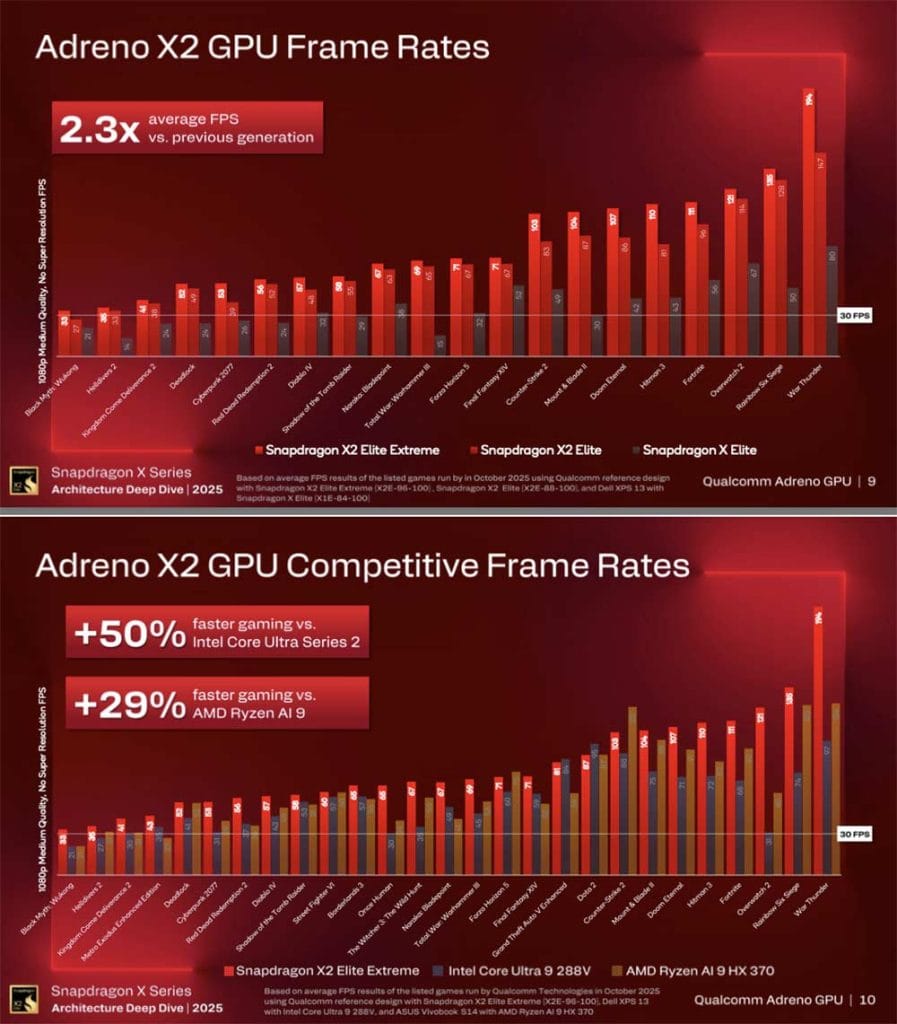
And it wasn’t just those two titles. Presentations shared with us paint a picture of a chip that can finally handle the backlog of games Windows users actually play. Red Dead Redemption 2 reportedly runs at a smooth 57 FPS, while Diablo IV clocks in at 58 FPS — numbers that are almost unheard of for a non-gaming laptop. For the competitive crowd, shooters like Overwatch 2 and Rainbow Six Siege are expected to hit 121 FPS and 135 FPS, respectively.
Perhaps more crucially, Qualcomm is promising updatable graphics drivers directly through its official website. That might sound like a small detail, but for PC gamers accustomed to Nvidia’s Game Ready drivers, it’s absolutely essential.
AI that does not need the cloud
Look, we get it. “AI” has become the tech industry’s favorite filler word. But Qualcomm is pushing a specific vision that actually makes sense: agentic AI. Forget about getting a chatbot to write a poem for you, because this is about onboard intelligence acting as a proactive agent to organize your digital life — sorting your calendar, triaging your emails, and locating that one file you saved three months ago — all locally.
To pull this off, the company’s newest platform features a significantly improved Hexagon NPU, now delivering 80 TOPS (Tera Operations Per Second, or Trillion Operations Per Second). For context, that surpasses the listed NPU performance of Apple’s M4 (38 TOPS) and leaves Intel’s Core Ultra 9 285H (13 TOPS) far behind. Meanwhile, Apple’s Intelligence-focused M5 boasts an NPU performance of around 133 TOPS.
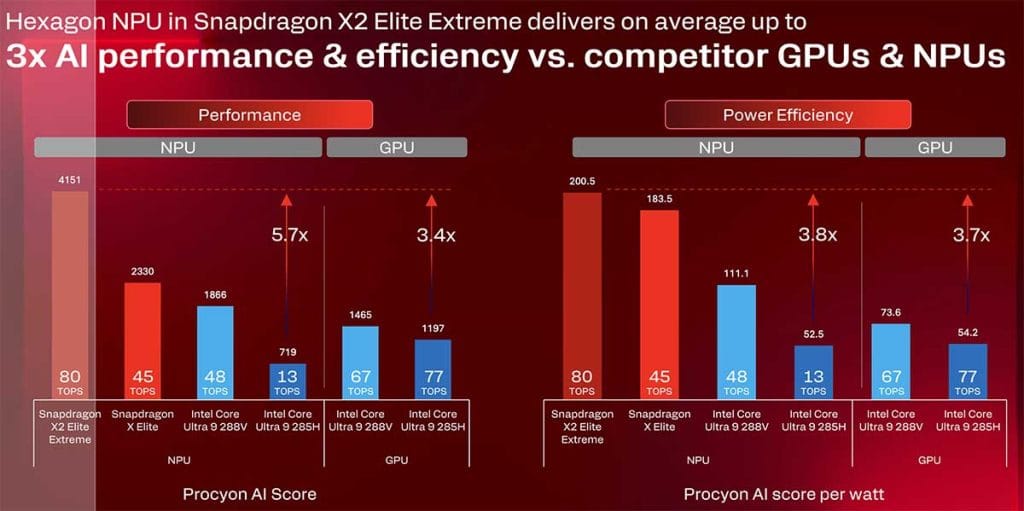
Qualcomm is boldly calling the Snapdragon X2 Elite Extreme the “world’s fastest NPU for laptops.” We saw a complex 24-billion-parameter model running locally on the device. That means your data stays secure, responses are instant, and your AI assistant functions seamlessly, even when you’re offline.
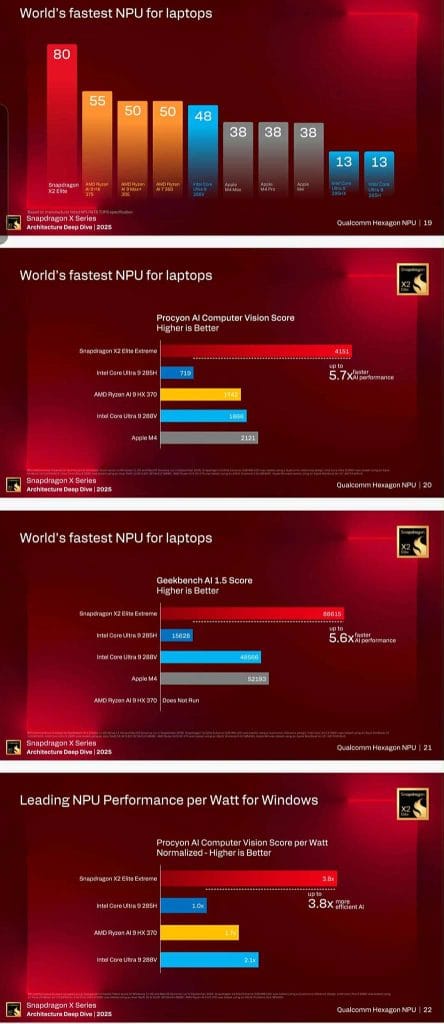
Picture this: We’re cruising at 35,000 feet, flying back to the Philippines from an event with a deadline looming. Let’s say we didn’t pay for the in-flight Wi-Fi. Normally, that would leave us stuck. But with the X2 Elite, we can drop hours of raw interview recordings and presentation audio directly into our laptop. Without a single bar of signal, the on-device AI is capable of transcribing everything, summarizing key quotes, and helping us structure our draft.
Unplugged factor
Buying a high-performance Windows laptop usually meant accepting a painful compromise — being tethered to a power brick the size of a hardcover book. The moment you unplugged it, performance tanked. You went from a Ferrari to an Altis (that’s the equivalent of a Corolla here in the Philippines) just to squeeze out an extra hour of battery life.
Qualcomm is attacking this pain point with conviction. Internal testing shows that the Snapdragon X2 Elite experiences virtually no performance loss when running on battery versus being plugged in. In benchmarks like Cinebench 2024 and Procyon AI Computer Vision, the chip delivered 100% of its plugged-in performance while on battery. Even in heavy multitasking scenarios tested by Geekbench 6, it retained 99.3% of its power.
It’s not just about speed, either. Qualcomm says the new Oryon CPU consumes 43% less power than the previous generation to reach the same performance peak. For everyday tasks like web browsing, Teams calls, and streaming, it also cuts total chipset power consumption by an additional 10%.
This huge efficiency gap is precisely why we saw such a frantic pivot to Lunar Lake and the new Ryzen AI series this year — right after the old guard realized that “good enough” efficiency wasn’t going to cut it in a post-Snapdragon X Elite world. Both chipmakers had to scramble to stop the bleeding. But here’s the kicker: Just as Intel and AMD thought they might be closing the gap, Qualcomm went ahead and moved the finish line again with its latest offering.
The real winner here is you
Sitting in these sessions, it’s hard not to feel a sense of relief for the industry — Intel and AMD’s duopoly has finally been broken.
With the Snapdragon X2 Elite Extreme, Qualcomm is setting the pace and raising the bar, not just offering an alternative. By delivering 50% faster gaming performance than Intel’s Core Ultra Series 2 and 29% faster than AMD’s Ryzen AI 9 in their comparisons, it has forced the old guard to wake up.
Intel and AMD now have to innovate. They need to fix their efficiency. They must take thermal management seriously. And that is the real story here. Whether you end up buying a Snapdragon laptop next year or sticking with x86, your computer is going to be better… because Qualcomm is pushing the envelope.
The stagnation is over. Let the excitement begin.
Team Philippines at the Snapdragon X Series Architecture Deep Dive 2025
Share this Post




